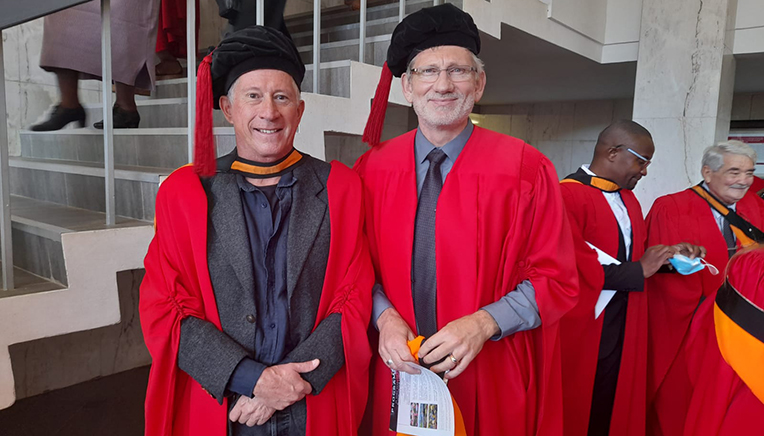The title of his thesis is, ’n Praktykbeheerde perspektief op Franz Marx as die sentrale figuur in die ontstaan van die eerste Afrikaanse TV-dagvervolgverhaal (A practice-driven perspective on Franz Marx as the central figure in the creation of the first Afrikaans daily serial). It is an ode to the work and legacy of Franz Marx, who passed away in 2021.
Doctorate immortalises legacy of Franz Marx
The lack of, or very little information available about
Franz Marx and other TV writers compelled Dr Vorster to focus his thesis on the influential Franz Marx.
“The influence of Franz Marx on South African television is legendary, and it was a privilege to immortalise his legacy,” says Dr Vorster.
His PhD research consisted primarily of two phases. The first phase focused on the factors that influenced Franz Marx as artist in the creation of the soapie Egoli: Place of Gold. This was practice-based research through interviews with Franz Marx and
30 TV practitioners, after which he contextualised it within the South African TV industry.
The second phase was the creative writing component, which materialised in the form of an Afrikaans telenovela hybrid, titled Skietstilstand, focusing on a small production team struggling to produce a new sitcom. “I also put this (research) further
into perspective with the help of extensive literature study,” he says.
Dream of quality television as incentive
There must be some motivation for any doctoral candidate to conduct intensive research on a given topic. For Dr Vorster, this motivation was his perpetual wish that there would one day be sufficient funding to produce quality television in South Africa.
“We have the talent and the will, but without sufficient budgeting, our TV industry will always simply produce boring chat and cooking programmes,” says Dr Vorster.
The influence of Franz Marx on South African television is legendary, and it was a privilege to immortalise his legacy. – Dr Chris Vorster.
For fellow lecturers and those who intend to attempt a doctorate, Dr Vorster has the following advice: “Put a LOT of effort into your research proposal, make sure that your study is mapped out in detail before you register the title; don’t
rush it! Also make sure that the topic is something that you wish to deal with day and night for years on end!”

Dr Chris Vorster with his PhD Promotor, Prof Henning Pieterse. (Photo: Prof Angelique van Niekerk)